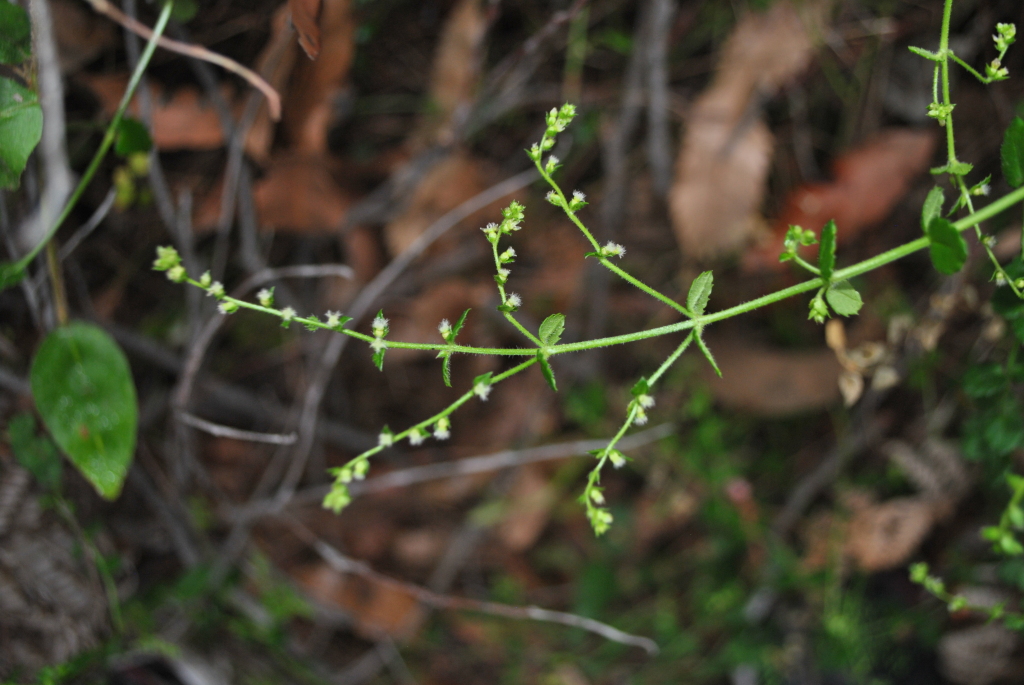Gonocarpus teucrioides
DC. Germander RaspwortErect perennial herb, 20–60(–90) cm tall; stems 4-angled, moderately hispid. Leaves opposite, ovate, 0.7–2.2 cm long, 3–13 mm wide, hispid, margins thickened, with 10–12 small teeth, base rounded to cordate; petiole 1–2 mm long; bracts opposite, alternate above, ovate, 2.5–4.5 mm long, entire to serrate, sessile; bracteoles lanceolate, 2–2.5 mm long, entire, green, fleshy. Pedicel 0.5–1 mm long; sepals 0.6–0.7 mm long, margins thickened, basal callus prominent; petals green to reddish, 2.6–3.3 mm long; stamens 8, anthers 1.7–2.5 mm long; ovary ovoid, 1–1.5 mm long, silver-grey, 8-ribbed with 2 or 3 oblique calluses between ribs, glabrous or sparsely scabrous. Fruit c. 1.5 mm long. Flowers Oct.–Jan.
Wim, VVP, GipP, OtP, Gold, CVU, GGr, NIS, EGL, EGU, HSF, HNF, OtR, Strz, MonT, HFE, VAlp. Also Qld, NSW, Tas. In Victoria apparently confined to east where found mostly in open-forest. There are nineteenth-century collections of this species from the Grampians area and the Dandenong Ranges, as well as a 1913 collection from Ballarat, but these have not been substantiated in recent times.
Distinguished from Gonocarpus humilis by its large green bracteoles that are as long as, or longer than, the fruit.
Jeanes, J.A. (1996). Haloragaceae. In: Walsh, N.G.; Entwisle, T.J., Flora of Victoria Vol. 3, Dicotyledons Winteraceae to Myrtaceae, pp. 887–908. Inkata Press, Melbourne.
 Spinning
Spinning

